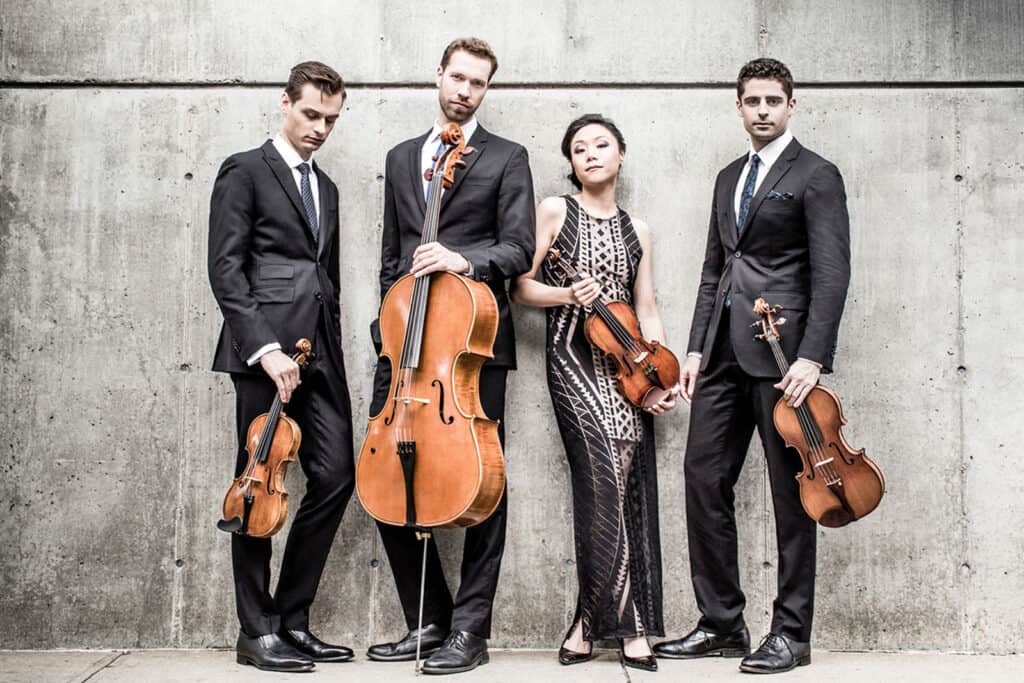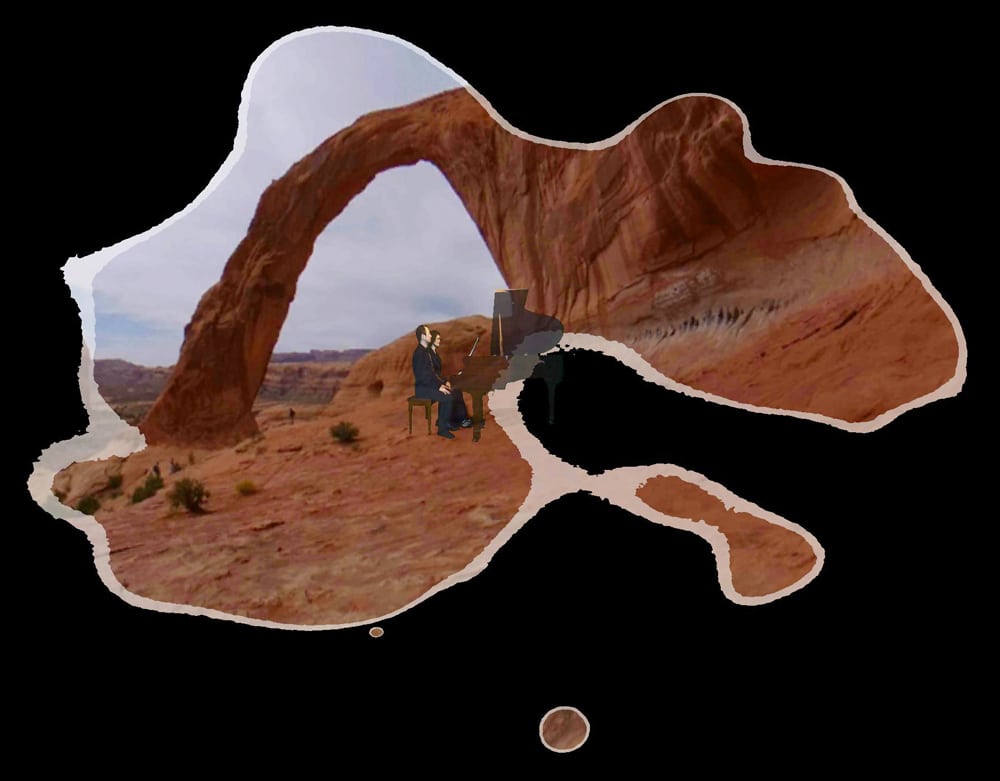Concert musicians performing at the University of Maryland plan to use an augmented reality (AR) experience to call attention to sea level rise in the Eastern Shore region of the United States coastline. Their audience will hear the music live but also can use the ImmerSphere app to add immersive video that complements the music.
The “Rising Tides” concert, performed by the Tesla Quartet, will feature compositions like Drops and Ripples by Adeliia Faizullina, a Tatar artist whose melodies evoke the sound of a few drops of water that ultimately make their way to the ocean. But its main focus is reflected in works by local composers Alexandra Gardner and Adrian B. Sims, recent graduates who are using their musical expertise to explore how climate change disrupts life in affected Chesapeake Bay communities.
This weekend’s concert, with its historical references to 19th-century fishing songs or the modern-day destruction of crashing waves, is part of the unveiling of a two-year “Rising Tides” collaboration between ImmerSphere and the university’s Clarice Smith Performing Arts Center.
“We see this as a thrilling opportunity to experiment together and observe the resulting artistic expression and community impact,” says Richard Scerbo, Artistic Planning Program Director for Music at the Clarice.
It’s the latest effort from arts communities seeking to advance the climate message, with a growing emphasis on AR and virtual reality (VR) techniques. Research from the Zurich University of the Arts and Swiss partner institutions, published earlier this year, suggests immersive AR/VR experiences are a useful tool in raising awareness about climate change.
When audience members at Maryland’s Clarice Smith Performing Arts Center use the AR app, they will “see” the Tesla Quartet members performing, for example, from a nearly submerged Chesapeake Bay causeway where water now reaches the edges of the asphalt that leads to the Hoopers Island fishing village.
Gardner says she recently visited the island and was struck by the impacts of climate change. “It was a really sobering experience to drive out there and see the ditches beside the road as you approach the island full of water on a dry summer day,” she said.
The three movements of Gardner’s work are called “Causeway,” “Ceremony” and “Ghost Pines.” In the app, according to the university, you can hear environmental sounds with the music: gently lapping water, wind in the grass, or even “the eerie silence of a pine forest whose trees have been killed off by saltwater encroachment.”
Sims’ work begins calmly with the AR-assisted scenery. “This peaceful introduction is then disrupted by natural and man-made phenomena, creating dissonance in both the music and the environment,” says the Tesla Quartet. “The music ends with a vision for the future—a vision of hope that we will treat our environment more kindly going forward.”
Immersphere was launched in 2020 by founder and CEO Oni Buchanan, a concert pianist and poet who found inspiration for applied AR technology in the arts during the COVID-19 pandemic. That vision grew into what the company calls a remarkably simple journey for arts lovers, jumping in with AR-capable smartphones and tablets.
“Accessibility is huge for presenters, huge for fans, and huge for artists,” says Buchanan. “The app is intuitive. You don’t need any complex equipment or hardware or lengthy tutorial to get started. Billions of people already have a metaverse portal in their pocket.”
Buchanan’s focus on climate messaging through the arts also is expressed through Ariel Artists, with concert events at universities across the United States.

Did you like it? 4.4/5 (21)








